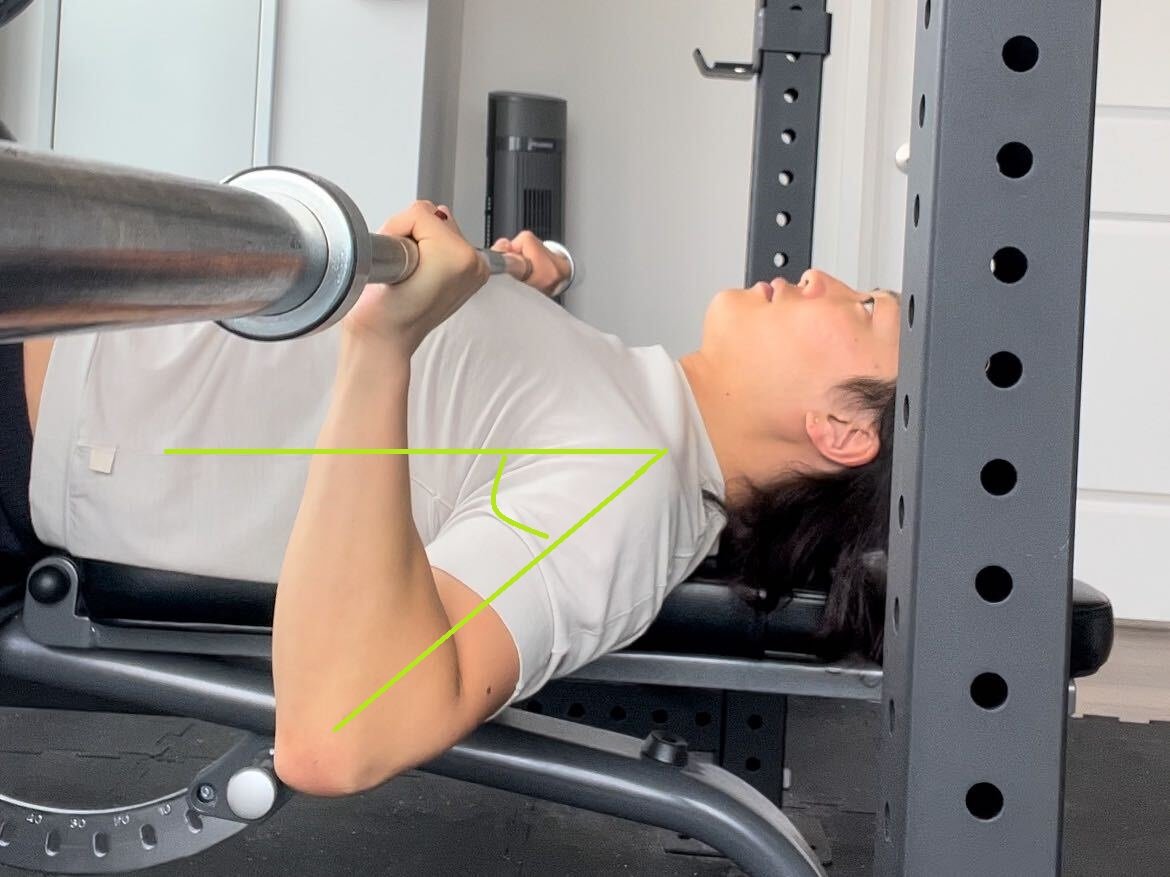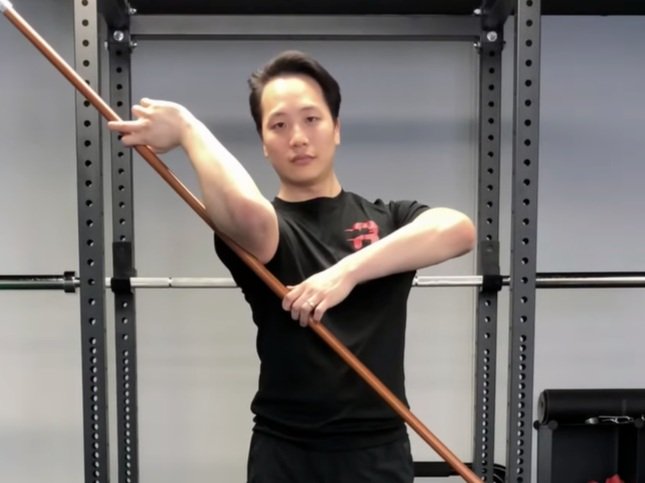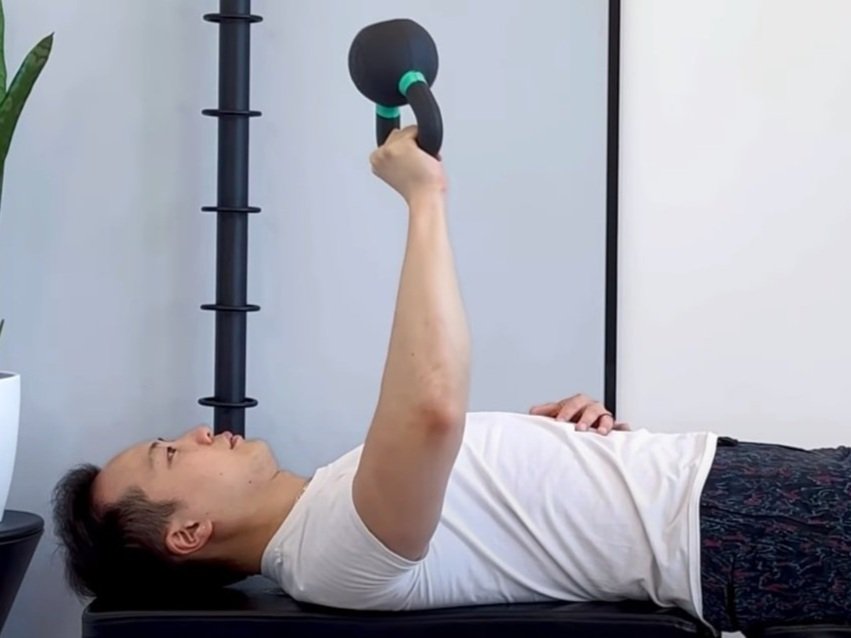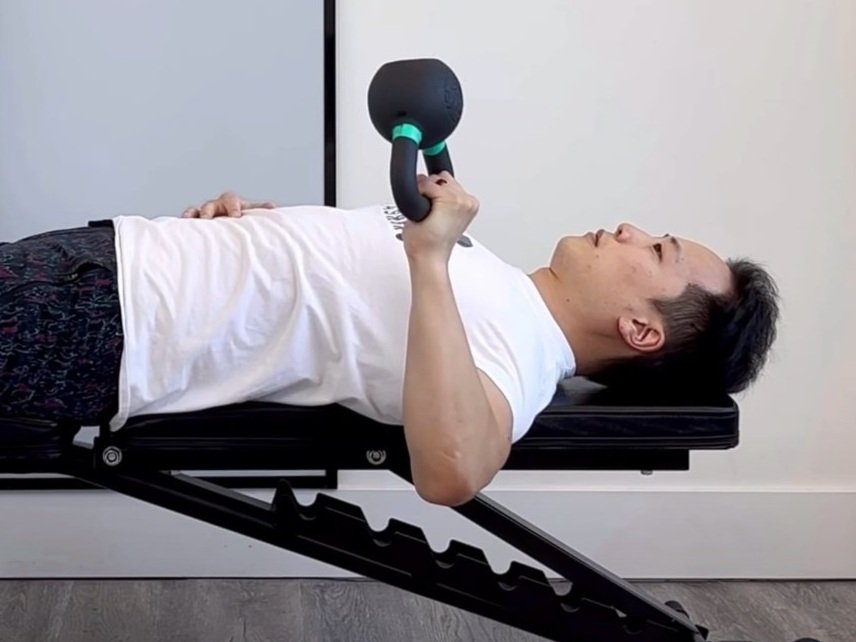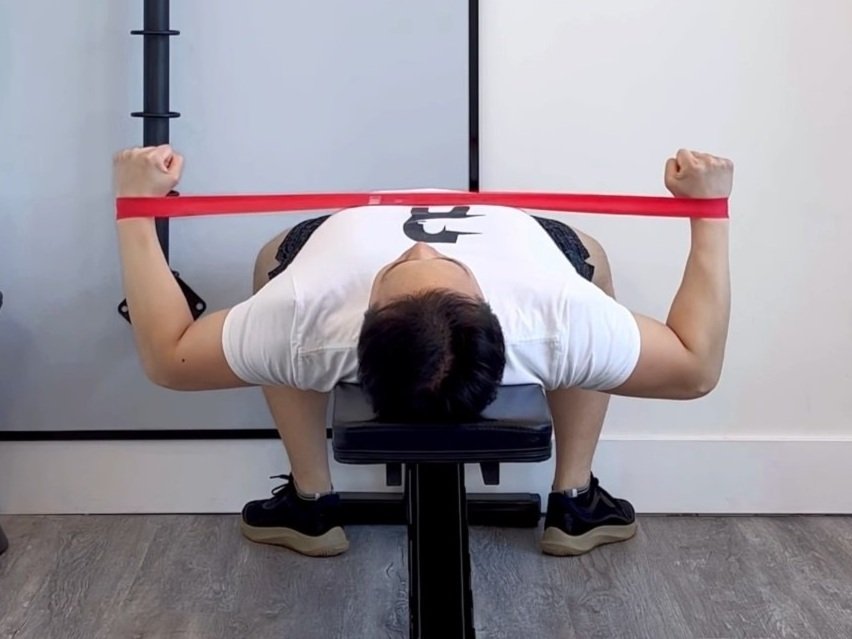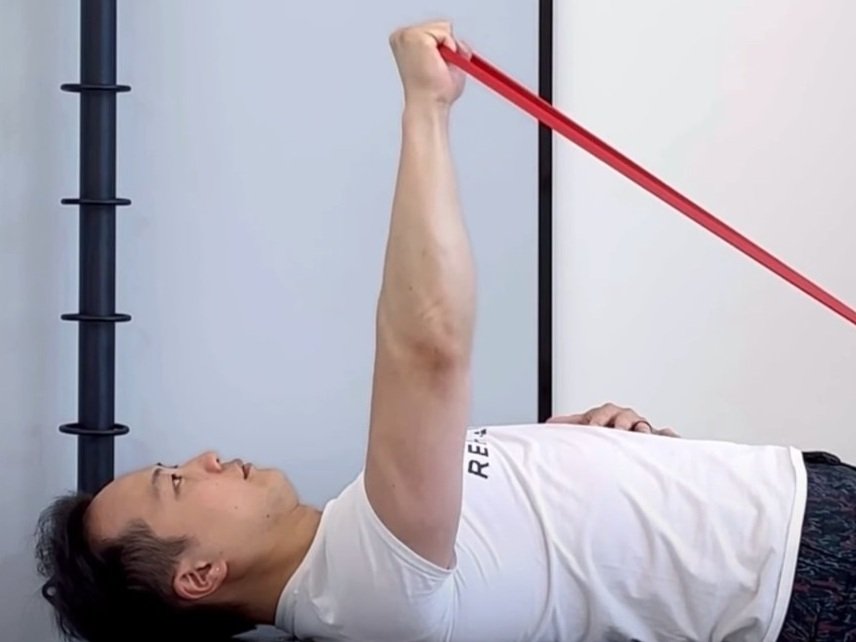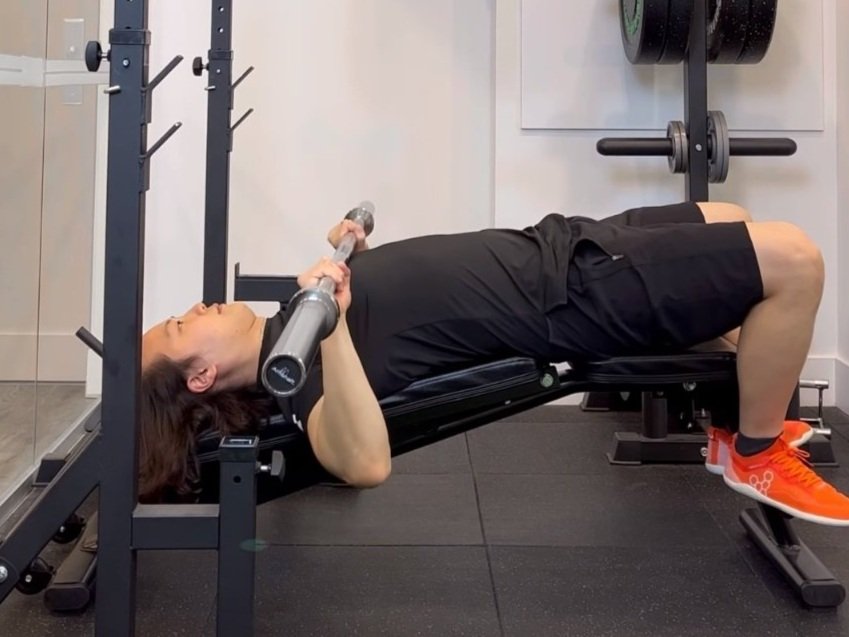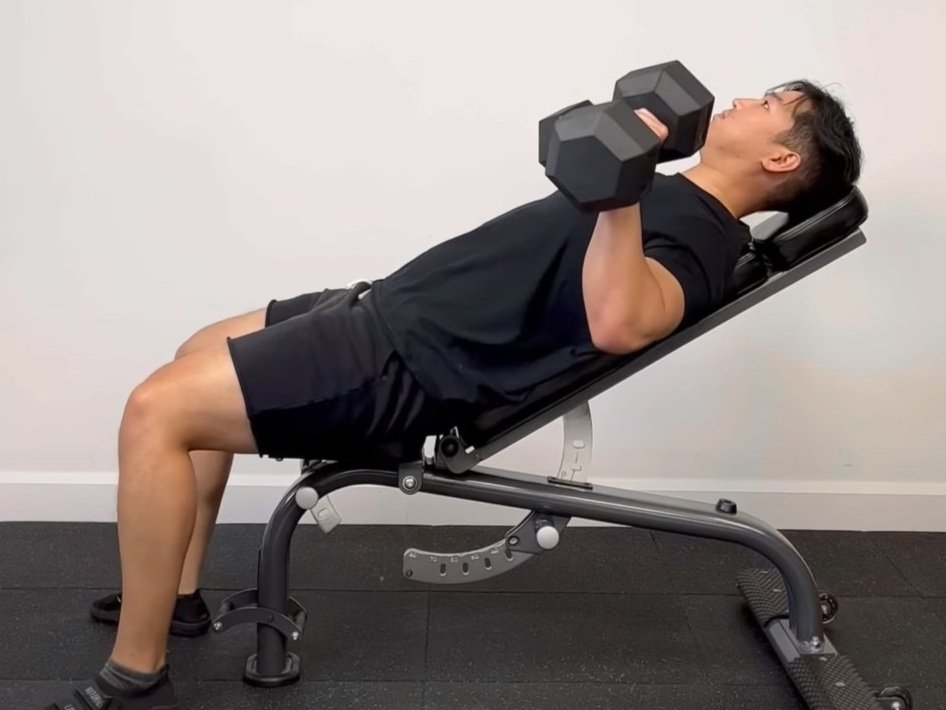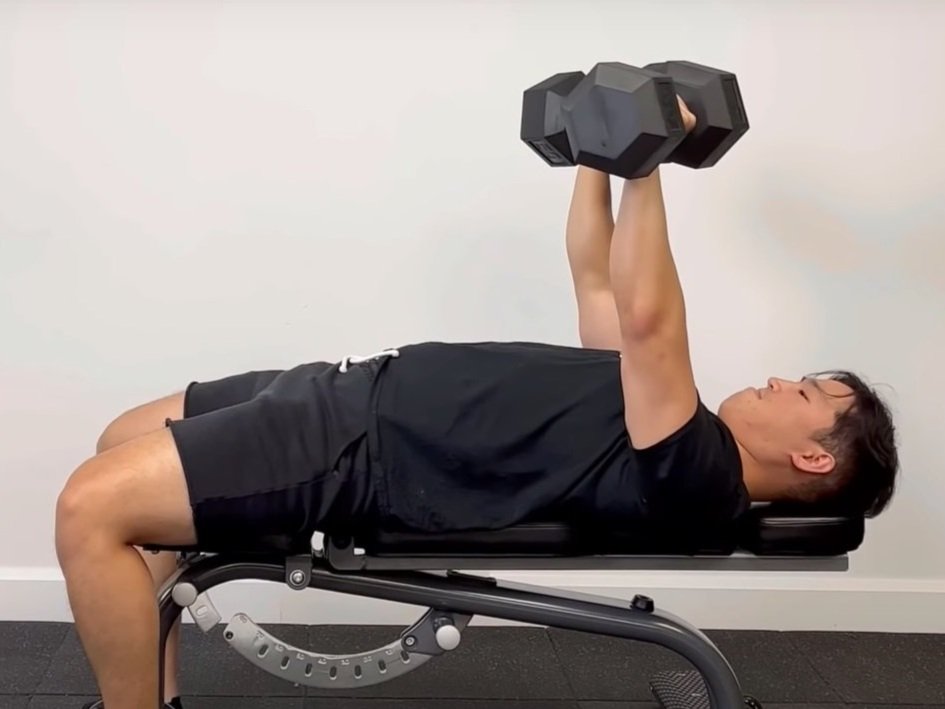Shoulder pain after chest workout
Front shoulder pain after bench press
Find out why you’re getting shoulder pain when pressing weights.
Getting shoulder pain after or during a chest workout is a frustrating experience as it can limit how much weight you can lift and really stall your progress. While most people may opt to take it easy or to simply rest to reduce their pain, they may also find that returning to heavy lifting causes the pain to come back and they get re-injured. As a result, many find themselves unable to break through lifting plateaus or may even end up getting demotivated as their fitness experience is ruined. So the ultimate question to ask is “why does my shoulder hurt after a chest workout?”. If you get shoulder pain after chest workout reddit won’t always have the right answer for you. Today your physiotherapist and chiropractic team at Rehab Hero is here to answer this very question.
Why does my shoulder hurt after chest day?
While there are many different structures that can be producing your pain, most of the time you can get shoulder pain due to one of two (or both!) reasons:
Your form isn’t good (leading to poor loading biomechanics)
You are increasing the weight you’re lifting too quickly (leading to overloading of your muscles or tendons)
Of the different injuries that can occur from doing a bench press with bad form, rotator cuff injuries are the most common. Other injuries that can be caused from lifting with bad form or increasing the weights lifted too quickly include shoulder instability and shoulder impingement. While doing exercises for the specific injuries will be required, correcting your form and updating your workout program will be needed. Its due to this that we always recommend getting your form assessed by a physiotherapist or chiropractor. You may also want to check in with a personal trainer to get your program updated (for better load management).
Aside from seeking professional help, our goal today is to identify some of the reasons why you’re getting shoulder pain when doing chest flys or shoulder pain when pressing. First things first, let’s take a look at some common errors in form that might be increasing your risk to injury.
Shoulder pain from bench pressing with arms flared out
One of the most common causes of getting pain at the front of the shoulder with a dumbbell press or barbell bench press is pressing with your arms too flared out. This generally occurs when the abduction angle of your shoulder is greater than 45 degrees. Since it is fairly difficult to spot check your own form, an easy way is to look at where the bar sits a the bottom position of your press. While resting at the bottom position, the barbell should be level with your lower pectoral line. If your shoulders are too abducted the bar will lie closer to your shoulder line.
Good Form
As visualized by the green lines, the upper arm is roughly at a 45 degree angle to the torso. You will also notice that the barbell rests around the lower pectoral line in this position. When pressing upwards note that the top position will be closer to your upper pectoral line. In this regard there is a swoop bar path during the bench press. The same principles apply to a dumbbell chest press.
Bad Form
Notice how in this picture the upper arm is in line with my shoulders. In this position the arm is abducted 90 degrees relative to my torso. As you can see the bar rests around the upper pectoral line. This position puts excessive stress on the shoulder joint leading to anterior shoulder pain.
The most common injury with this type of lifting pattern is shoulder impingement or osteolysis of the distal clavicle. Both of these conditions can trigger pain during or after doing chest exercises. This can cause both right shoulder pain after a chest workout and left shoulder pain after a chest workout depending on which arm (or both) is lifting with improper mechanics.
Shoulder pain from bench pressing with arms externally rotated
Remember when we mentioned that getting rotator cuff problems are one of the most common causes of shoulder pain when bench pressing? A lot of it has to do with pressing with too much rotation in the upper arm (your humerus). While the arm might not be actively rotating during the exercise, you may be statically holding a rotated position. This leads to a torque force placed onto the shoulder by the weight causing the rotator cuff muscles straining more than necessary.
When pressing with your arm externally rotated, the internal rotators of the shoulder will need to isometrically contract to stabilize this inefficient position. This puts unnecessary strain on the subscapularis muscle as it is the main rotator cuff muscle responsible for internal rotation of the shoulder.
Good Form
Notice how the wrist is stacked directly above the elbows? This causes a net neutral rotational force to be placed on the shoulder as the weight of the barbell is fully supported by the forearm. This will spare the rotator cuff from being overworked. When getting spot checked your forearms should be completely vertical indicating that the wrists are support by your elbows.
Bad Form
Observe how external rotation (red arrow) causes the forearm (red line) to move away from the gravity line (green line). This will require activation of the subscapularis to stabilize this new position resulting in a constant and otherwise unnecessary contraction to resist this torque (green arrow).
If this is how you bench press you may find that simply returning your arm to neutral rotation will result in a pain free bench press. By improving your form you can effectively de-load your subscapularis as it is much easier to stabilize your shoulder from a neutral position instead of an externally rotated position. If there is still some discomfort you made need additional subscapularis rehabilitation as fixing your form won’t get rid of any tendinosis it may have. In this case visiting a sports injury clinic near you will be a good idea.
Shoulder pain from bench pressing with arms internally rotated
Common bench press injuries to the shoulder like rotator cuff tendinitis can also occur if the arm is excessively internally rotated. When the humerus is placed into internal rotation this causes your wrist to fall out of alignment with your elbow. This produces a rotational force that your rotator cuff now needs to resist (in neutral there is no rotational force therefore no rotational force to resist). Your external rotators, namely the infraspinatus and teres minor, will need to contract in order to stabilize this rotated position.
Bad Form
Comparing this form to the good form image shown earlier in this blog shoulder internal rotation (red arrow) causes the forearm (red line) to deviate away from the gravity line (green line). This causes the rotator cuff muscles to activate (green arrow) in order to resist this rotational pull.
Its easy to see the benefits of bench pressing with good form and net neutral rotation. As you can imagine, hundreds of pounds of force will go through the external rotators of the shoulder once you start pressing with internal rotation. Given that the rotator cuff is a group of muscles with relatively small muscle bellies, they can get overwhelmed by lifting with bad form and this can lead to repetitive strain or tendinosis injuries.
A quick tip when fixing your form is to decrease the amount of weight that you’re lifting. This not only makes it easier to control, but also gives your tendons, joints, and muscles time to adapt to training in a new movement. This might take a few weeks of practice, but the results are worth it.
How do you fix shoulder pain after chest press?
If you have lingering shoulder pain after chest pressing it’d be a good idea to stop pushing through pain. Modifying your workout so that you are working within pain free angles or with lighter weights for a few weeks can give your shoulder pain time to heal. Fine tuning your lifting technique is also ideal to prevent shoulder reinjury. You may find that you need specific exercises to help correct your form, if this is the case we recommend that you consult a physiotherapist or chiropractor near you. To get a personalized rehabilitation program by a Rehab Hero physio or chiro in Toronto or Markham click the button below.
Can chest muscles cause shoulder pain?
Absolutely, in the event where you have strained your pectoralis major or pectoralis minor muscles shoulder pain can occur during resisted pressing motions. Straining your chest muscles can occur during heavy lifting in a fatigued state, or when accidentally lifting outside your normal range of motion. Healing times for chest strains can vary depending on the severity of the tear. It can take anywhere between 2 weeks to 6 months for your pec strain to heal. To improve how long it takes to recover getting it treated with therapies like massage, acupuncture or cold laser and completing a rehab exercise program is recommended. To learn more about pectoralis strains and how to recover from this injury click here to read more about it.
Where should it hurt after chest workout?
Generally speaking, unless it is delayed onset muscle soreness (or DOMS for short) it shouldn’t hurt anywhere after a chest workout. Soreness related to microtrauma from exercise can also be present in your secondary movers including the deltoids and triceps. DOMS can have peak muscle soreness 1-2 days following a workout, with a gradual decrease in soreness lasting up to a week. If you have pain or soreness that is persistent or does not decrease after 1-2 days it is important to seek medical attention from a registered physiotherapist or sports chiropractor.
How to relieve shoulder pain after chest workout
If you have shoulder pain from one or more of the aforementioned reasons mentioned earlier in this blog, you’ll realize that different exercises are needed due to the different causes of shoulder pain. Exercises for bench press shoulder pain will be divided into three main categories:
Recovery exercises
Mobility exercises
Strengthening exercises
Recovery exercises refer to exercises that help to improve local blood flow and reduce pain. By increasing soft tissue circulation you can get improved delivery of nutrients needed to make your tendon or muscle heal. If you have sustained a chest strain injury, then a pectoralis active massage can be one way of improving blood flow to the muscle tear.
The pectoralis active massage is generally done in short doses throughout the week. Generally finding 2-3 tender spots and doing about 4-6 repetitions per spot is more than enough to get results. This exercise is best done every other day as time between massage sessions is needed for recovery. Please note that you can make things feel worse if you over massage a muscle strain. Massage based exercises follow the saying “less is more”.
Mobility exercises aim to improve shoulder mechanics so that you can get into the right position when you do a bench press. Stretching has shown to be an effective intervention for improving range of motion, however it does require consistency in order to get long term results. If you have undiagnosed shoulder pain get assessed by a physio or chiro first as stretching exercises can make your symptoms worse or delay recovery if done for the wrong muscle group (stretching a strained muscle will make it feel worse).
If you’re lifting in excessive shoulder external rotation due to tight shoulder external rotators, a stretch pushing you into internal rotation will be needed. An example of an exercise that accomplishes this is the sleeper stretch.
The sleeper stretch targets the infraspinatus and teres minor which are rotator cuff muscles. If these muscles are stuck in contracture then it can limit your internal rotation range of motion, therefore forcing you to lift outside a neutral range.
In similar context but opposite direction, if you’re lifting in excessive internal rotation then doing a mobility exercise that pushes your shoulder into external rotation can help to open up your range of motion. An example of an exercise that stretches out your internal rotators is the dowel external rotation exercise.
The dowel external rotation exercise targets the shoulder internal rotators namely the subscapularis, pectoralis major, teres major and latissimus dorsi. By stretching out this functional group of muscles you can improve your shoulder flexibility so that you can bench press in neutral rotation. Research shows that stretching based exercises like this one will need to be done daily in order to improve your baseline range of motion. So although you can do this as part of your warm up routine, you will depend on this exercise unless you do it daily (it can takes a few weeks to months to improve your baseline flexibility).
Both recovery exercises and mobility exercises are done in order to help you improve your lifting technique, but strengthening exercises will be needed in order for you to stimulate positive adaption in your rotator cuff tendons. For this, we like to use exercise bands due to constant tension that they provide. Beginner friendly strengthening exercises for your external rotators and internal rotators are the eccentric shoulder external rotation exercise and internal rotation side step exercise respectively.
Shoulder pain bench press treatment
There are many different treatment options available for your shoulder pain. Both physiotherapy and chiropractic treatments at Rehab Hero include myofascial release, deep tissue massage, acupuncture, cold laser, and shockwave therapy treatments for bench press related shoulder pain. Likewise, massage therapists, acupuncturists and naturopaths can offer similar treatments to improve the recovery of your muscles and tendons. As mentioned previously, correcting your lifting mechanics and doing rehabilitative exercises will also be necessary for you to reach full function. You can get your lifting technique assessed by a Rehab Hero healthcare provider by clicking the button below.
Written by: Dr. David Song
Dr. David is a chiropractor with a passion in helping strength athletes and recreational lifters alike weightlift pain free. With over 15 years of experience in the fitness industry he helps his patients understand why certain lifts cause pain and how to overcome them.


